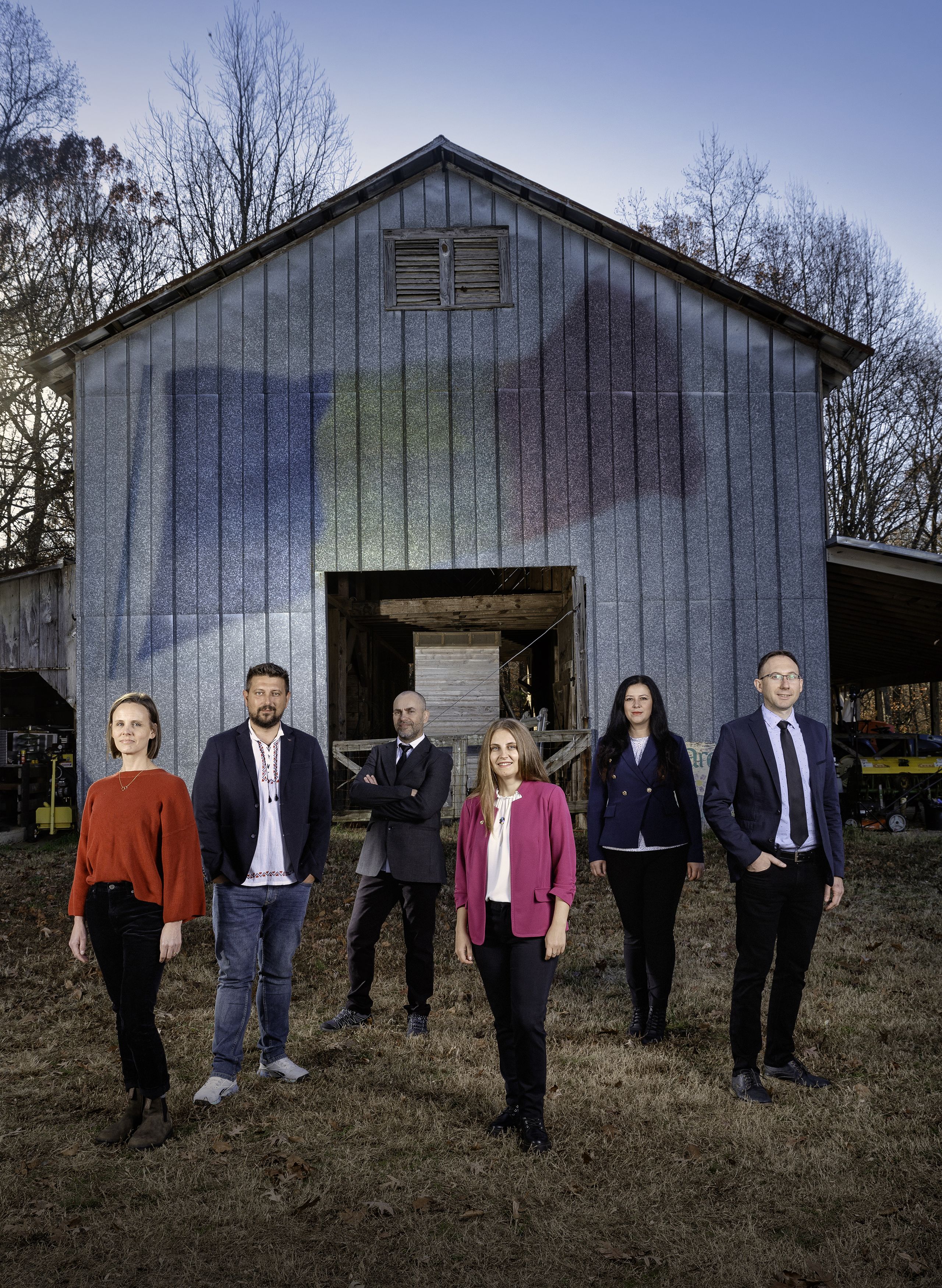From Romania to Georgia and Back
Romanian-American Foundation Fulbright Scholars unite with UGA Extension to envision a model for agricultural outreach in Romania.
From left, CAES Associate Professor Abigail Borron and Fulbright Romanian-American Foundation Scholars Mihai Suteu, Daniyar Memedemin, Alina Zaharia, Andreea Ona and Daniel Chiciudean stand in front of an image of the Romanian flag projected onto a barn at UGArden.
From left, CAES Associate Professor Abigail Borron and Fulbright Romanian-American Foundation Scholars Mihai Suteu, Daniyar Memedemin, Alina Zaharia, Andreea Ona and Daniel Chiciudean stand in front of an image of the Romanian flag projected onto a barn at UGArden.
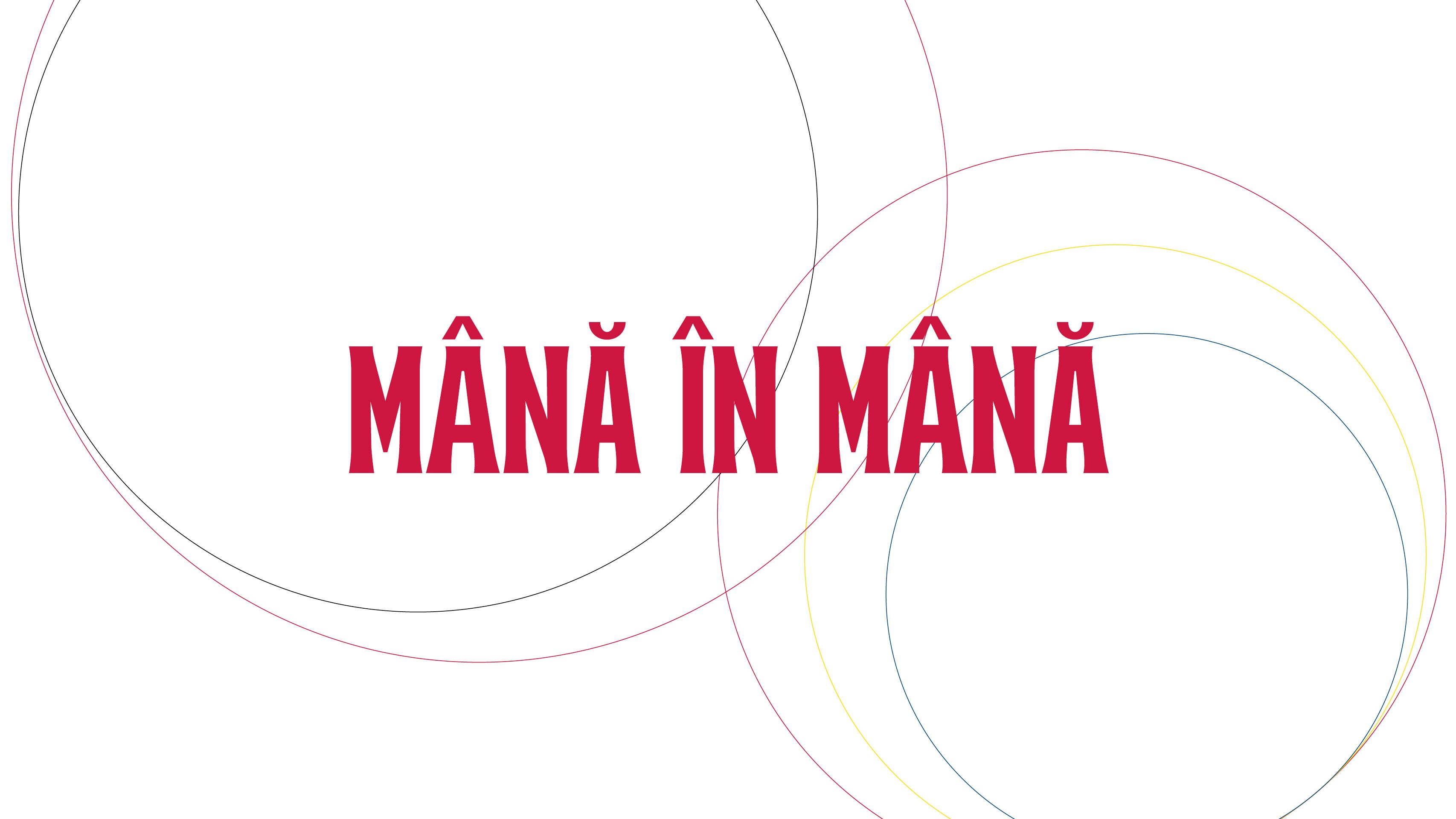

In the Romanian language, the saying “a merge mână în mână” means “to go hand in hand.” UGA Extension and the Romanian-American Foundation unite to envision a model for agricultural outreach in Romania.
Arriving on the Athens campus of the University of Georgia in August 2023, five Romanian scholars experienced the same anticipation, excitement and apprehension as many first-year students.
Chosen as Fulbright Romanian-American Foundation Scholars, each serves on the faculty at one of three Romanian universities, specializing in fields from economics and engineering to plant breeding and biotechnology. The five scholars comprised the first cohort of the Romanian Extension Education Development Program, an ambitious three-year pilot effort to facilitate planning and implementation of extension services in Romania.
The program seeks to create a sustainable outreach model for delivering education and advisory services to rural communities in Romania. The scholars’ ultimate goal is to increase the productivity and income of small and medium farms and agribusinesses through improved production practices, value-added production and increased market access.
The scholars — Daniel Chiciudean, Andreea Ona and Mihai Suteu from the University of Agricultural Sciences and Veterinary Medicine of Cluj-Napoca, Daniyar Memedemin from Ovidius University of Constanta, and Alina Zaharia from Bucharest University of Economic Studies — each applied individually for the Fulbright grant, submitting proposals based on their academic focus areas.
Over the course of four months, these scholars immersed themselves in the operations and culture of UGA Cooperative Extension under the guidance of program director Abigail Borron, associate professor in the Department of Agricultural Leadership, Education and Communication in the College of Agricultural and Environmental Sciences.
Abigail Borron, who has worked in Romania on rural economic development, created the proposal to bring the Fulbright-RAF Scholars to UGA.
Abigail Borron, who has worked in Romania on rural economic development, created the proposal to bring the Fulbright-RAF Scholars to UGA.
They traveled the state, visiting UGA’s campuses in Athens, Griffin and Tifton; shadowing UGA Extension leaders, CAES faculty mentors and UGA Extension agents; and meeting with agricultural industry members and producers to learn how they work with and benefit from their relationships with UGA Extension. The scholars also met with university representatives from units including the J.W. Fanning Institute for Leadership Development and Archway Partnership, who discussed university-community partnerships focused on community and economic development.
Funded by a $781,000 grant from the Romanian-American Foundation (RAF) and administered by the nonprofit study abroad and intercultural exchange organization CIEE (Council on International Educational Exchange), UGA was chosen from a competitive process among U.S. land-grant universities to administer the program.
“Romania is one of the very few European countries that does not have a working system for agricultural consultancy. Romania tried other models, like agricultural chambers, but they did not work. In 2018 we started to look to the model of extension services that exist in the U.S.,” said Roxana Vitan, president of the RAF. In Romania, county agricultural chambers were established in 2010 to provide agricultural advisory services and training, however many operated only on paper without providing services.
Farmlands near Hosman, a Saxon village nestled halfway in between Bucharest and Cluj-Napoca.
Farmlands near Hosman, a Saxon village nestled halfway in between Bucharest and Cluj-Napoca.
Romanian agriculture
- Romania has nearly 3.5 million farmers — the highest in the European Union —most of whom are subsistence farmers with small landholdings.
- Agriculture is a leading sector of the Romanian economy, with 23% of Romanians employed in agriculture.
- Ninety percent of Romanian farms are 12 acres or less.
- Within the EU, Romania is the largest producer of sunflower seeds, honey and plums, and is one of the biggest producers of cereals.
Source: European Commission report
UGA Extension and the land-grant model
The Romanian extension network will need to differ from UGA’s model due to differences between the countries, but the program will provide inspiration, Vitan explained. “Our plan is looking at what works and bringing it back home to experiment as we build up a new system.”
In other countries, the government offers extension programs rather than universities, said Borron, who will travel to Romania annually to help facilitate in-country programming.
“What’s unique about the U.S. system is the capacity to have a touch point in every aspect of a local community, which allows us to have very cross-collaborative, cross-interdisciplinary and multi-expert collaborations to address community needs.”
Borron will develop a research component for the program to monitor the development process, participant experience and overall extension engagement.
“This is an interesting aspect of the program: to be able to see what it looks like to take university outreach and engagement into very new communities,” she said. “Especially in places like Romania that are dealing with a lot of things from a post-Communist standpoint, it is very different from what we deal with in our own communities.”
UGA program co-directors include CAES Coordinator of International Programs Victoria McMaken, former Assistant Dean for Extension Mark McCann and Extension Program and Staff Development Specialist Kristi Carpenter. CAES faculty and UGA Extension specialists Tim Coolong, Gary Hawkins, William Hudson, Vanessa Shonkwiler, Lawton Stewart and Kevan Lamm served as scholar mentors.
The Cooperative Extension system in the U.S. dates back to the passage of the 1914 Smith-Lever Act, which created the service to disseminate research-based information produced by land-grant universities and U.S. Department of Agriculture research stations. Land-grant universities are designated public institutions charged with providing equal access to higher education with a focus on farming and mechanical skills for working-class citizens.
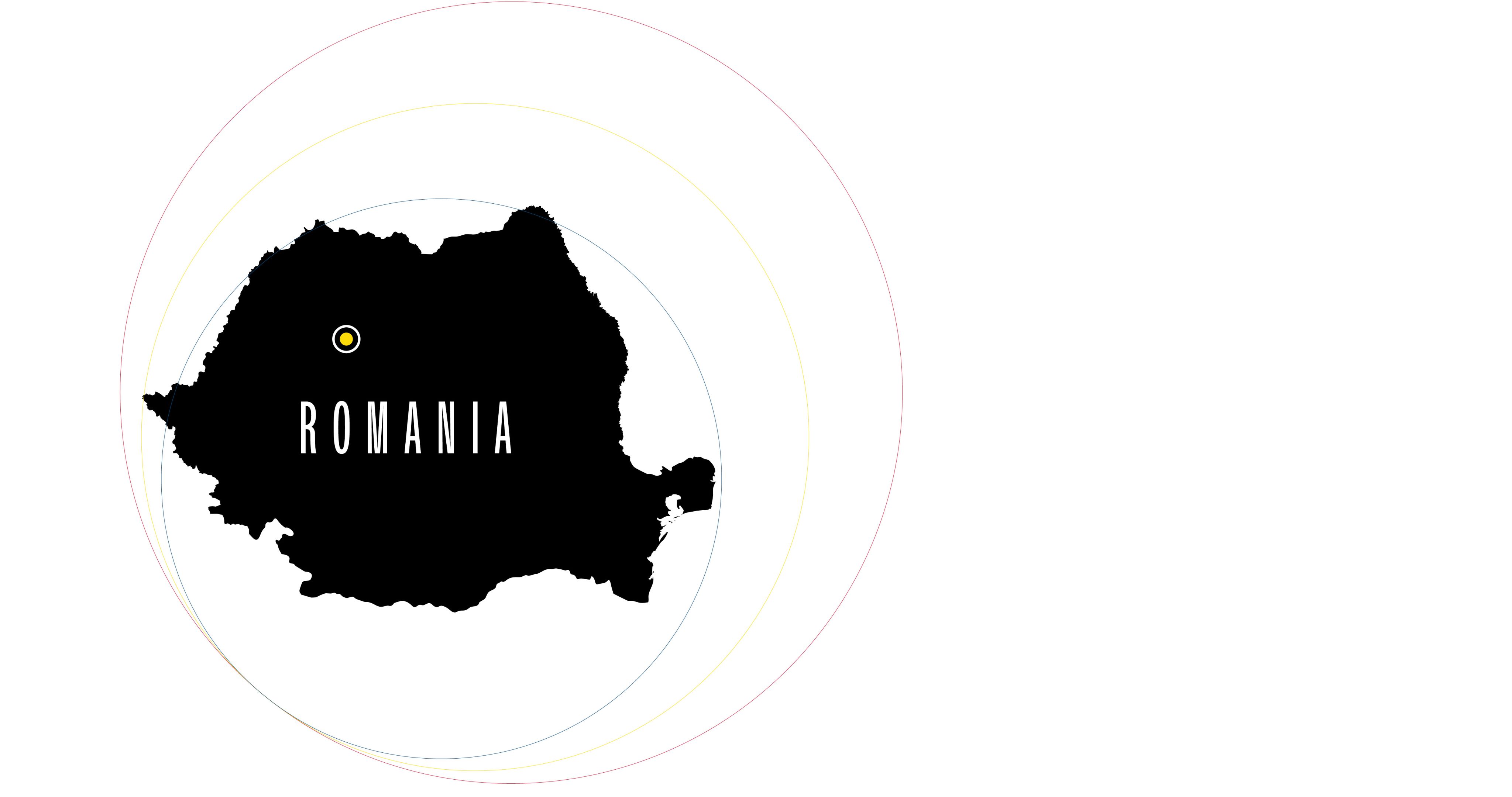
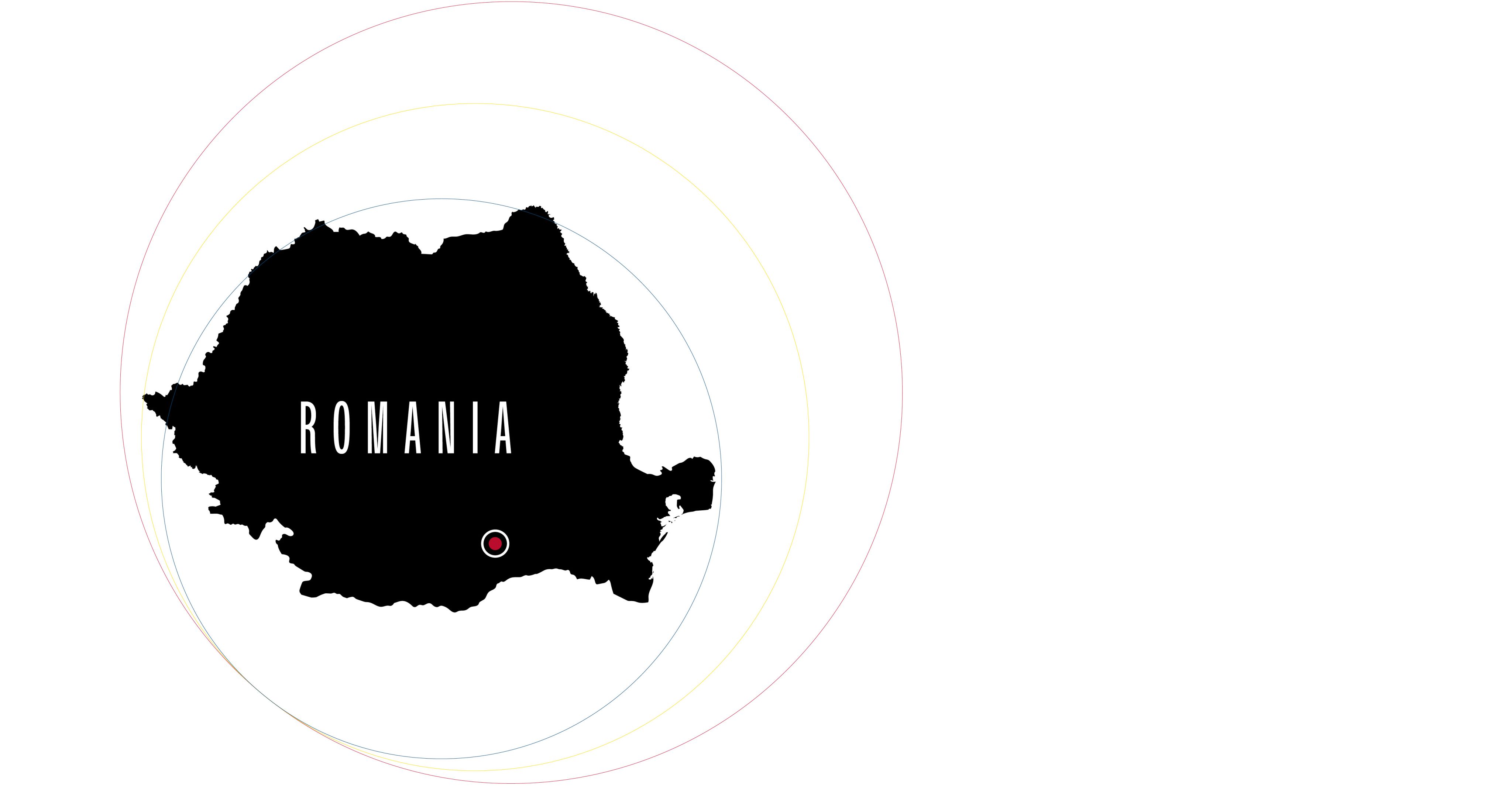
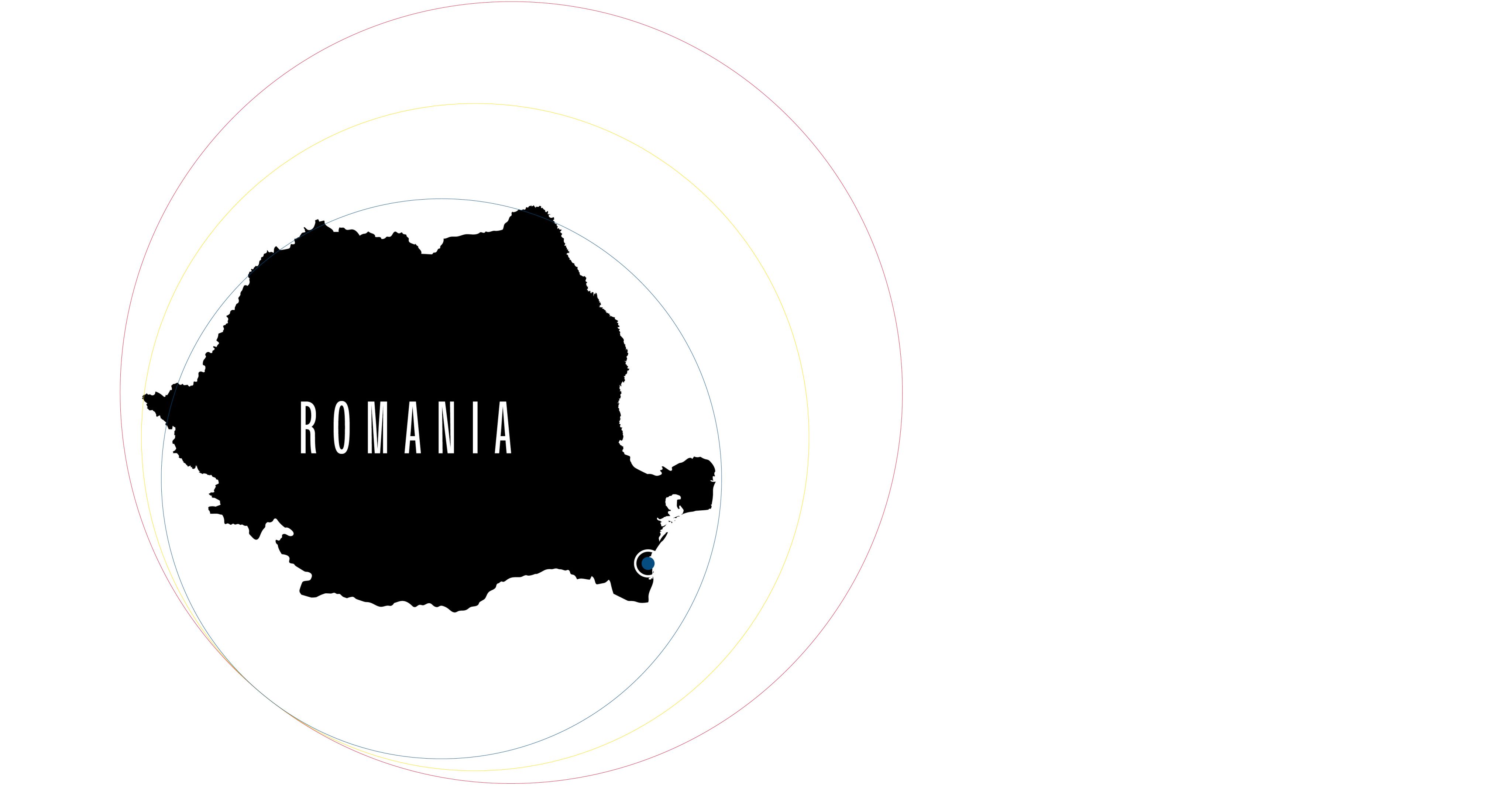
Meet the Scholars
University of Agricultural Sciences and Veterinary Medicine of Cluj-Napoca
Daniel Chiciudean
Daniel Chiciudean
Andreea Ona
Andreea Ona
Mihai Suteau
Mihai Suteau
Bucharest University of Economic Studies
Alina Zaharia
Alina Zaharia
Ovidius University of Constanta
Daniyar Memedemin
Daniyar Memedemin
Agricultural science as public outreach
In Romania, political and agricultural history is intertwined and complex. In late 1947, agriculture in Romania underwent forcible collectivization after the establishment of the Romanian People’s Republic. Following the Romanian revolution in December 1989, ongoing efforts have returned land back to the previous owners or their heirs.
Over the past 35 years, government support for agricultural and rural advisory services has shifted between state and local levels, resulting in most government funds being spent at the administrative level. Current agricultural advisory services are chiefly provided by commercial entities through sales of agricultural inputs.
“There is a lack of science knowledge shared with farmers. We need to adapt our system to fill in the gaps between collaborations with the government and providing the information to the farmers. This is where it breaks down,” said Memedemin, an assistant professor specializing in soil science, grassland management and botany.
As of 2022, about 12% of Romanians practice agricultural-related activities, and the country’s 2.9 million agricultural landowners account for one-third of the European Union’s agricultural holdings, according to the U.S. Department of Commerce International Trade Administration. However, the average farm size of just under 11 acres (4.42 hectares) is considerably smaller than the EU average, and the majority are family-owned farms producing for home consumption, local sale and the support of extended families.
As an economist whose research involves agri-food and environmental economics and sustainability, Zaharia said the extension model of making research meaningful and relevant to small producers has been an interest since her doctoral studies.
“We can think of doing community assessment needs, but we cannot start with all of Romania. We have to start somewhere, and the good news is that we come from several universities, and we can reach more regions,” said Zaharia.
Using the country’s university system as a base for a comprehensive approach to agricultural consultancy will build on the framework created by existing community outreach and development efforts.
“There are steps we are already taking in our universities toward civic engagement and community involvement, but we are not doing so in a coordinated way. If we put everything together in a strategic way, we may see that we’ve already started toward an extension system,” said Chiciudean, an agricultural economist.
Chiciudean, Ona, Zaharia, Suteu and Memedemin pose for a photo at dusk at UGArden shortly before the end of their program at UGA.
Chiciudean, Ona, Zaharia, Suteu and Memedemin pose for a photo at dusk at UGArden shortly before the end of their program at UGA.
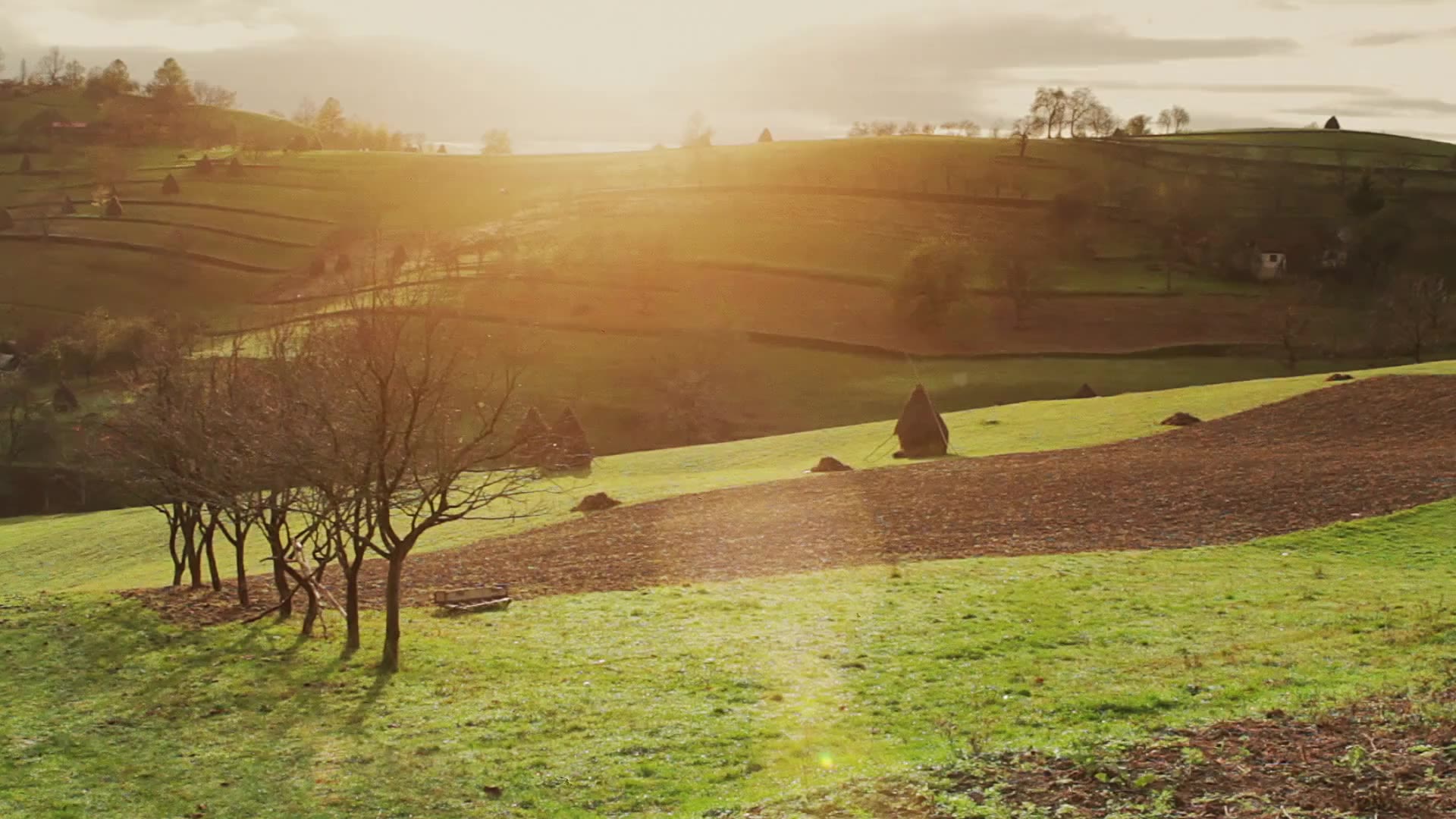
Creating a culture of service
Fulbright-RAF Scholar Andreea Ona, who specializes in plant breeding and genetics, was particularly interested in developing a service-learning component at the University of Agricultural Sciences and Veterinary Medicine of Cluj-Napoca.
“Our model of service learning has to prepare our students for first recognizing and understanding problems from the real world, then having the theoretical education from the university they need to reflect on how to solve those real problems,” Ona said.
The second cohort of five Fulbright-RAF Scholars will arrive at UGA in August. The 2024-25 Fulbright-RAF Scholars include faculty from universities in three university centers — Bucharest, Cluj-Napoca and Timisoara — extending the geographical footprint in western Romania.
In June, the first class of scholars will make a presentation to the new cohort before they depart for UGA in August to build connections between each year’s participants and their universities.
McCann pointed out that across the U.S., extension systems are organized and implemented differently from state to state, “but the fundamental principles are the same.”
“The system they start in Romania might be more similar to UGA Public Service and Outreach. There are many units across campus that have faculty who are involved in community development beyond the university including the Carl Vinson Institute of Government and the Archway Partnership,” he said.
Reflecting on the experience, Zaharia said the cohort gained insight from both UGA Extension and academic faculty and staff on how different units support the overall success of public service and outreach.
“Each one of us, through our mentors and all the people we met along the way, had many opportunities for creating connections and finding different perspectives on agricultural extension systems,” she said.
While the current Romanian Extension Education Development Program is funded for three years, Vitan is confident that the program will succeed far beyond its start.
“As a foundation, we are trying to find ways to help the small person to be an entrepreneur and make a living. Small-scale agriculture really hits a lot of the points that are important — it hits biodiversity, it hits poverty, it hits stronger communities and economic opportunities for women,” Vitan said. “We are here for the long run.”

